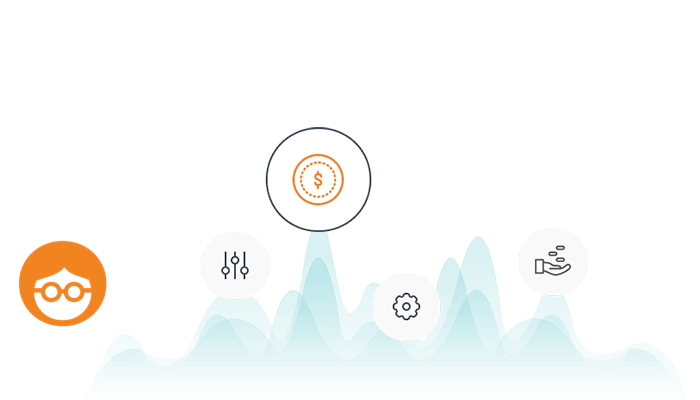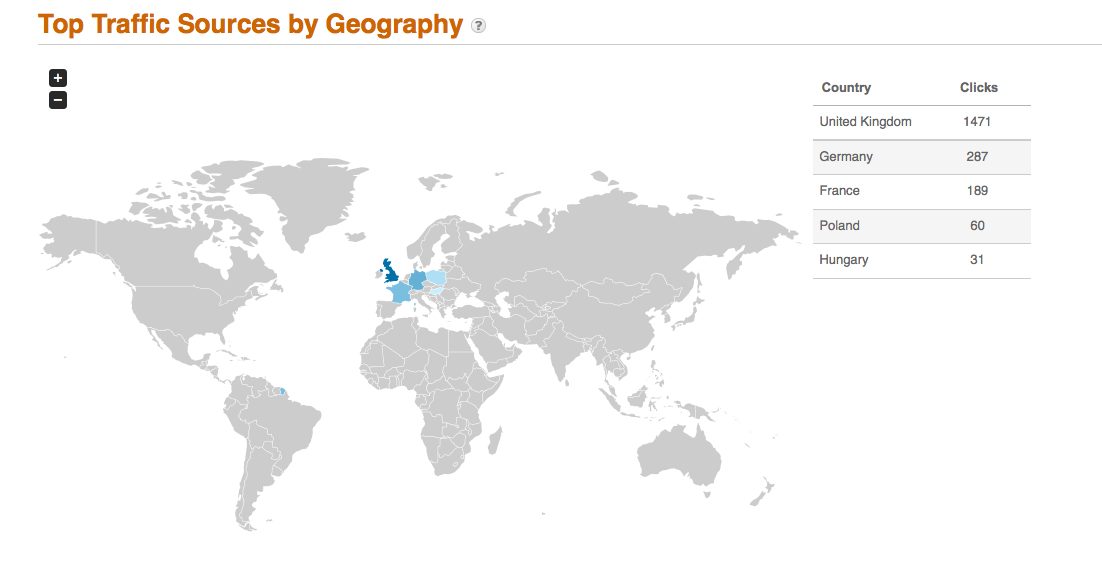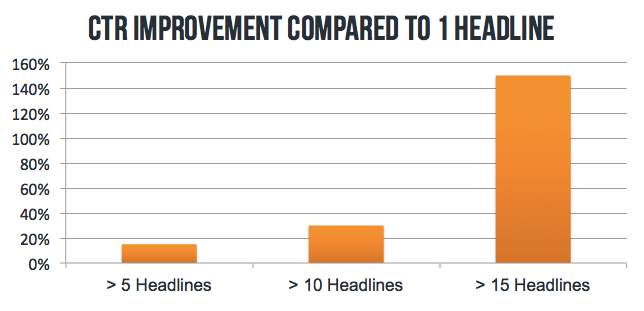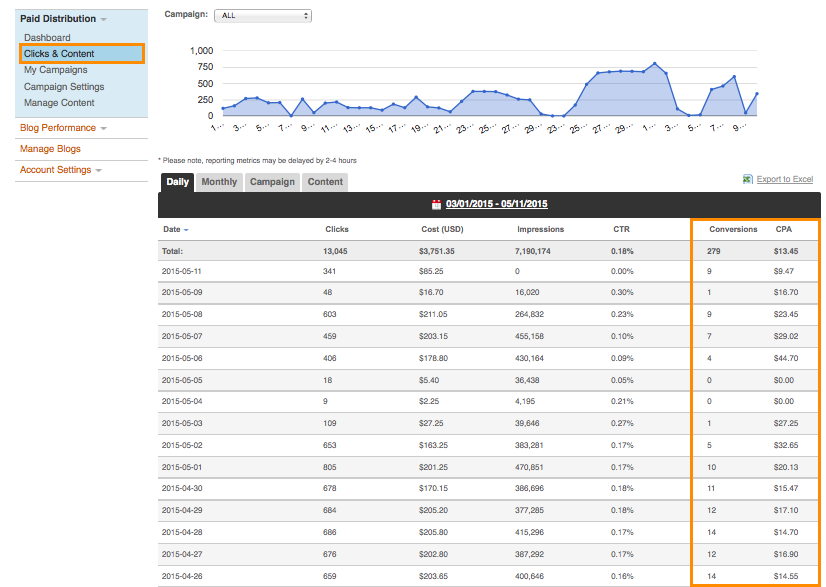5 Ways We Decrease Our Own Amplify Cost Per Acquisition

Capitalizing on the billions of recommendations being served each month across our network of premium publishers is the smartest way to reach a massive audience and tell a brand story.
Like most platforms that come together as a part of your marketing mix, each has their own nuances, capabilities, and even best practices.
As the Online Marketing Manager for Outbrain, I’m a regular user of our Amplify product for paid media initiatives and know that a well-optimized campaign can mean all the difference to the performance of a piece of content.
From one PPC person to the next, I’m going to show you the features and tactics I use to best improve the cost per acquisition of my campaigns so you can do the same for yours:
- Targeting the Right Geographies
- Separating Campaigns Per Device
- Multivariate Headline Testing
- Filtering Publishers
- Setting Conversion Goals
Targeting the Right Geographies
When creating a content campaign, never underestimate the impact of simply going after audiences in the right location.
Through Outbrain’s platform capabilities, I’m able to target content recommendations by state and Designated Market Area (DMA) for the more location-specific content or if I’m only interested in attracting a local audience.
And soon enough, zip code targeting will be released, allowing me to drill down even further.
|
|
As a tip, if you aren’t running a global empire, make sure to select the right options here in terms of what you can match in products and services to the new audiences that will be targeted with your content.
Otherwise, the map of “Top Traffic Sources by Geography” in the dashboard might look something like this:
 Of course, if you’re looking to build an audience overseas, this would be considered a great success!
Of course, if you’re looking to build an audience overseas, this would be considered a great success!
When targeting a more narrow audience on the state or DMA level set a higher cost-per-click (CPC) to increase my reach as the competition for impression inventory is more limited.
I try to do this on a campaign-by-campaign basis to make sure I’m targeting the right audiences with the right bids.
Over time, as the campaign starts generating more clicks and I hit my budget cap, I will gradually lower my CPC a few cents at a time while reaching more qualified audiences.
More on how I use this method along with the help of our conversion optimization tool to identify and prioritize traffic sources that are performing these valuable actions, below.
It’s all a part of leveraging the right tools to achieve more conversions at a higher rate and at a lower CPA.
Separating Campaigns Per Device
The world is moving to mobile.
Most of us know that, but not everyone is aware of how they can take advantage, so tapping into the Outbrain network for these purposes has shown great results.
When first creating a content campaign, the default setting for platform targeting is going to be all-inclusive. That means desktop, tablets and smartphones.
That’s great, but if I want to see the real impact of my marketing initiatives across devices, I want to know what content resonates on each of them individually.
I do that by separating my campaigns by platform.
Because experiences with content are completely different for desktop than they are on a tablet or smartphone, I want to make sure I’m appealing to consumers on each device with the right experience.
Some of my own tests resulted in 40% – 50% lower mobile leads in a number of campaigns, along with lower bidding.
After splitting up campaigns, I’m then able to identify and focus on where my target audiences are engaging online so that I can supply them with the specific content they demand and on the platform they most desire it, ultimately producing more cost-efficient CPCs and improvements to my CPA.
I’ll start with high bids for the best results as I know it’s all about investing budget into my campaigns. From there, I will monitor for success and optimize accordingly for improved performance.

(An example of an optimized content campaign)
During the first few weeks, I’m watching to make sure that I’m capping my budget each day.
The graph above shows what strategically starting at a high bid and then working down over the course of a few weeks can do for a campaign.
Just keep in mind that the conversion goal of each content campaign may differ per platform.
For example, if you don’t have a mobile-friendly website that can capture conversions as well as your desktop experience can, you’ll want to adjust how you’re looking at your CPA in relation to the different goals you’ve set out to achieve for each campaign you’ve separated.
Multivariate Headline Testing
Sounds scary, but it’s necessary and really not that complicated.
After analyzing the overall behavior of our customers, we learned that the more headlines being tested per individual piece of content, the better chance of receiving a higher click-through rate (CTR).

That makes a huge impact when content is recommended across our publisher network.
So, when it comes to optimizing content for the campaigns I’m running with Amplify, I always create some additional titles/headlines and images to new and existing URLs.
The general rule of thumb is at least 3-5 headlines per URL and at least 2-3 images.
With our bulk upload feature it’s pretty easy to write alternate titles/images, and even validate my URLs:
I consider using super specific titles in order to capture the right audience crucial to this part of the process, as to not spend budget on uninterested readers.
Remember, not all titles and images are created equal.
I’ll go on to measure the individual value of each element being tested within the campaign so I can understand how it affects my CPA and overall marketing KPIs.
Then, I go back and add a few more headlines and images to be tested after I’ve started making some initial impressions and start seeing some results.
That way, I’m not dividing too many initial impressions across a multitude of variations — I want to see what works first and add from there.
Find some great “Tips For Testing Headline and Image Variations for Successful Content Discovery Campaigns.”
Filtering Publishers
With the launch of each campaign, I know my content goes through a two-day exploration phase in order to find the most interested audience.
While sometimes I’m surprised by what publications deliver engaged readers to the content I’m amplifying, I may not always be interested in showcasing articles on certain sites.
I will usually filter out whatever sources I deem irrelevant to my campaign, and in doing so, increase the likelihood of engaging the right users on more of the targeted sites of my choosing.
Through some of my own testing based on site quality and content, I can get a good indication of a target audience along with their:
- Demographics
- Interests
- Vertical
- Industry
Taking those factors into account definitely makes an impact on not only my CPC but CPA as well.

But don’t just take it from me, digital marketing and education firm, 9clouds their experience using our targeting features.
Here’s a snippet of what they had to say about our Publisher Filtering tool:
|
|
It really isn’t more complicated than that.
Setting Conversion Goals
At Outbrain, we know that you can’t fully optimize for acquisition without setting goals.
Thankfully, our conversion pixel will allow us to quantify traffic value while assessing ROI.
By tracking users referred from my Amplify content back to the Outbrain site, I’m able to measure some of the soft conversions we’re interested in, like time on site and page views, as well as harder conversions such as subscribes, downloads and registrations.
All which take place during the campaigns I have running.

The tracking pixel is built for both owned media and earned media and is worthwhile when I’m looking to determine which content is better serving my CPA.
Much like monitoring and adjusting bids on high or low performing content, I will then filter out or optimize campaigns that just aren’t producing acquisition value, regardless of what their CTR might indicate.
This way, I’m driving the majority of traffic to the content with the highest levels of conversation (i.e. visiting a product page).
Outbrain as a Part of the Marketing Mix
As I’ve written about before, there are a lot of options and many different tactics for approaching online paid media.
I’m lucky to be able to use Outbrain as an amazing platform for reaching audiences with our own content. Hopefully, the tips I’ve shared will help you refine the campaign of your dreams.
Now that you know the ball is in your court, will you use the tools provided above to optimize the content experience for yourself and your readers?















